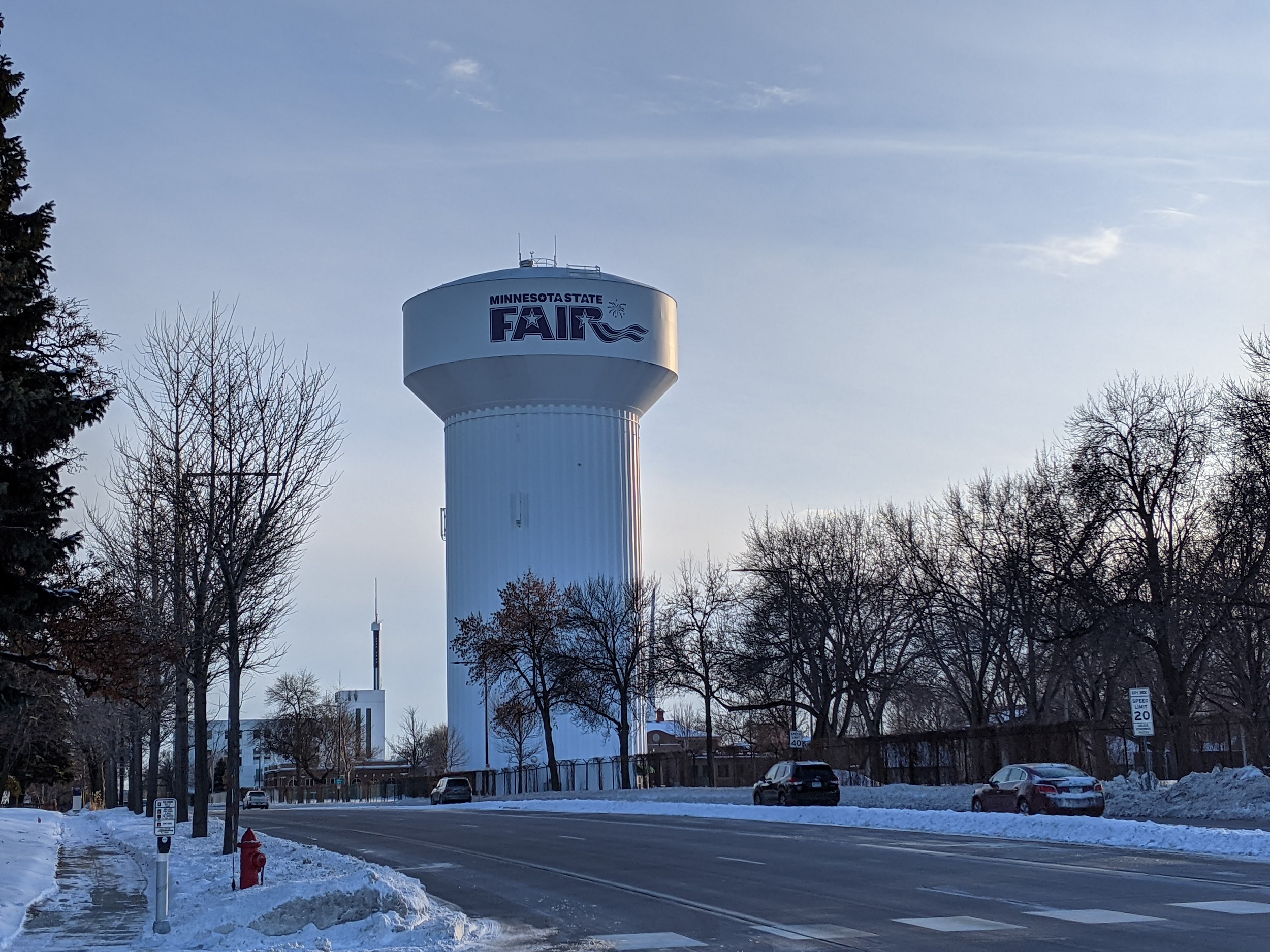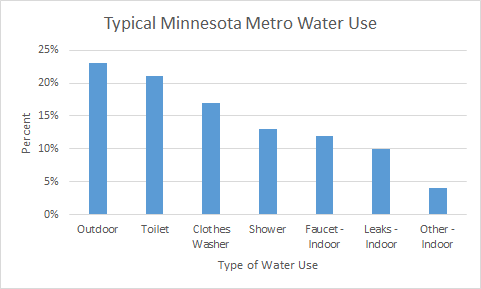By Shane Evans
In Minnesota we are privileged to be called the Land of 10,000 Lakes. We are also the state where you can find the headwaters of the mighty Mississippi River. As such, people don’t typically worry about how much water they use. This is especially true when looking at the amount of water applied to lawns and landscapes. During winter however, almost no water is used outside the home (watering the flowers/lawn, swimming pools, etc.). So what could a lawn water conservation educator possibly talk about during these cold winter months? I wanted to briefly discuss general water use in the home, give you a peek into Minnesota’s water infrastructure and make you more aware of how water impacts your daily life. If you have ever wondered where the water used in your home comes from, where it goes, or how much water you use each day, this is the article for you.
Where does your water come from?
Though lakes and rivers abound across the Minnesota landscape, over half of the public water supply comes from groundwater. Groundwater is defined as water taken from an aquifer (a natural underground layer of sand, gravel and porous rock). Another portion of Minnesotans use a personal well for water, with the remainder of the public water supply coming from surface water (rivers and lakes). In short, more than 70 percent of the water used by Minnesotans comes from below the ground!
How does water get to my home?
The process isn’t exactly the same for each watershed district, but in general, water goes through three steps before it enters your home.
- Step 1 - Water is collected and stored. For surface waters, this collection basin is often a reservoir or dam. Groundwater can also be pumped to a collection basin, but is typically stored in water towers.
- Step 2 - To assure water meets the drinking standards of the EPA (learn about the EPA’s Safe Drinking Water Act of 1974) this stored water is filtered (removal of silt, leaves, etc) and is then treated to kill harmful microorganisms and other impurities. At this time, fluoride may also be added to the public water supply.
- Step 3 - This treated water is then pumped into storage tanks, such as your local water tower, and eventually pumped into your home for you to use.
All of this pumping and moving of water requires miles of piping which often goes unnoticed because it is primarily underground. Even though you may not see it, your home, your yard and even the street you live on has pipes underneath which connect each house, water tank and treatment facility to this water highway.
Where does the water go once it goes down the drain?
In the Twin Cities Metro Area (TCMA), water that has gone down the drain will end up at one of nine wastewater treatment facilities. After traveling through miles of pipe, these nine treatment facilities will treat around 250 million gallons of water per day and serve approximately 2.6 million people. For perspective, an Olympic size swimming pool contains 660,000 gallons of water, which means, almost 400 Olympic size swimming pools of water are treated every day by these facilities. After treatment, water from these nine facilities, and many of the other facilities around the state, will eventually end up flowing down the Mississippi River.
How much water do I use in my home?
Doing some quick math you can estimate each of those 2.6 million people uses 96 gallons of water per day. Now, not all water treated as these plants comes from homes, but a large percentage does. Of the water used in homes in the TCMA, almost a quarter of it is used outside and 10 percent can be attributed to leaks! Here at the University of Minnesota, our turfgrass research group is trying to improve water use efficiency in the home by reducing the need for outdoor water use.
I hope you've enjoyed this brief look into the Twin Cities water system and its complexities. I hope you better understand the effort that goes into keeping clean water readily available for everyone. Water is essential, and without clean water, life would be much harder for all of us. Though my focus is on lawn water conservation and education, I feel it is important we also understand where our water comes from and the many other ways it can impact us and our environment. Much of the information presented in this article can be found in the many links below. If you would like to learn more, please click a link that interests you and tell a friend or neighbor what you learn.
Want to learn more?
Using less water in your lawn and landscape
- Please explore other blog posts on our site or on the UMN Extension website.
- Feel free to watch our watering webinar series.
- Where to find water efficient appliances for your home.
Watershed management organizations
- Find out to which watershed organization you belong.
- From this same webpage above you can learn about watershed districts, the role they play and even navigate to your watershed districts webpage and learn what is happening in your area.
Resources from the Minnesota Department of Health
- Information on Drinking Water in the Home.
- Information on Drinking water and COVID-19.
Information regarding groundwater resources
- The state of groundwater from the Minnesota Pollution Control Agency.
- Groundwater for drinking.
- Is our use of groundwater sustainable?
Information on the Clean Water Fund
- Many of the organizations working with water receive funding from the Clean Water Fund. Learn more about the Clean Water Fund and the Clean Water Land and Legacy Amendment.
More information on Shane Evans, Water Lawn Conservation Educator


